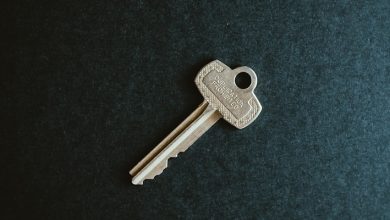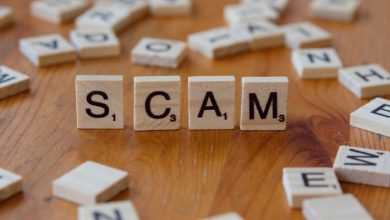How to Research an Exchange’s Security Features Before Signing Up

- Understanding the importance of researching an exchange’s security features
- Key factors to consider when evaluating an exchange’s security measures
- Tips for assessing the reliability of an exchange’s security protocols
- Common security threats in the cryptocurrency exchange space
- Comparing security features across different cryptocurrency exchanges
- Ensuring your funds are safe: a guide to choosing a secure exchange
Understanding the importance of researching an exchange’s security features
Researching an exchange’s security features is crucial before signing up to protect your assets from potential threats. By understanding the security measures put in place by an exchange, you can make an informed decision about the safety of your funds and personal information.
One important aspect to consider when researching an exchange’s security features is the use of encryption technology to protect data transmission. Look for exchanges that utilize SSL encryption, which helps secure communication between your browser and the exchange’s website, preventing unauthorized access to your information.
Another key security feature to look for is two-factor authentication (2FA), which adds an extra layer of protection to your account. With 2FA enabled, you will need to provide two forms of identification to access your account, making it more difficult for hackers to gain unauthorized access.
Additionally, consider the exchange’s track record when it comes to security incidents. Look for information on any past breaches or hacks, and how the exchange responded to these incidents. A transparent and proactive approach to security issues is a good sign that an exchange takes the safety of its users seriously.
Before signing up for an exchange, take the time to thoroughly research and understand the security features in place. By doing so, you can help safeguard your assets and trade with peace of mind knowing that your funds are protected from potential threats.
Key factors to consider when evaluating an exchange’s security measures
When evaluating an exchange’s security measures, it is crucial to consider several key factors to ensure the safety of your assets and personal information. One important aspect to look into is the implementation of **encryption** technology. This technology helps secure data by converting it into a code that is difficult to decipher without the correct decryption key. Additionally, **two-factor authentication** is another essential security feature that adds an extra layer of protection by requiring users to provide two different forms of identification before accessing their accounts. This helps prevent unauthorized access even if a password is compromised.
Furthermore, **regular security audits** are vital to ensure that an exchange’s security measures are up to date and effective. These audits are conducted by third-party security experts who assess the exchange’s systems and processes for any vulnerabilities or weaknesses. **24/7 monitoring** is also crucial to detect and respond to any security threats in real-time. This continuous monitoring helps prevent potential breaches and ensures that any suspicious activity is addressed promptly.
In addition to these technical security measures, it is essential to evaluate an exchange’s **insurance policies**. Insurance can provide an additional layer of protection in the event of a security breach or hack that results in financial losses. It is important to understand the extent of coverage provided by the insurance policy and how it applies to different types of security incidents.
Overall, when researching an exchange’s security features, it is important to consider a combination of technical measures, regular audits, monitoring, and insurance policies to ensure comprehensive protection for your assets and personal information. By thoroughly evaluating these key factors, you can make an informed decision about the security of an exchange before signing up.
Tips for assessing the reliability of an exchange’s security protocols
When researching an exchange’s security features, it is crucial to assess the reliability of their security protocols. One way to do this is by checking if the exchange has implemented strong encryption measures to protect user data. Look for protocols like SSL/TLS, which encrypt data transmitted between users and the exchange to prevent unauthorized access.
Another important aspect to consider is whether the exchange uses two-factor authentication (2FA) to add an extra layer of security to user accounts. 2FA requires users to provide two different authentication factors to log in, making it harder for hackers to gain unauthorized access. Additionally, look for exchanges that offer biometric authentication options, such as fingerprint or facial recognition, for added security.
It is also recommended to research whether the exchange has a robust system in place for storing and protecting user funds. Exchanges should use cold storage solutions to store the majority of user funds offline, away from potential cyber threats. Additionally, regular security audits and penetration testing can help identify and address any vulnerabilities in the exchange’s security protocols.
Furthermore, consider the exchange’s track record when it comes to security incidents. Look for any past breaches or hacks that may have affected user funds or data. A transparent exchange will openly communicate about any security issues and provide details on how they were addressed to prevent future incidents.
By thoroughly assessing an exchange’s security protocols, you can make an informed decision about whether it is safe to sign up and trade on the platform. Prioritizing security when choosing an exchange can help protect your investments and personal information from potential cyber threats.
Common security threats in the cryptocurrency exchange space
When researching a cryptocurrency exchange’s security features, it is important to be aware of common security threats that exist in the cryptocurrency exchange space. By understanding these threats, users can better evaluate the security measures put in place by an exchange to protect their assets.
- Phishing attacks: Phishing attacks involve malicious actors posing as legitimate entities to deceive users into providing sensitive information such as login credentials or personal data. These attacks can be conducted through fake websites, emails, or messages.
- Malware: Malware refers to malicious software designed to disrupt, damage, or gain unauthorized access to computer systems. Users may unknowingly download malware that can compromise the security of their cryptocurrency holdings.
- Insider threats: Insider threats involve individuals with authorized access to an exchange’s systems using their privileges to exploit vulnerabilities or steal sensitive information. This could include employees or contractors with malicious intent.
- DDoS attacks: Distributed Denial of Service (DDoS) attacks involve overwhelming a system with a flood of traffic to disrupt its normal functioning. This can lead to downtime for an exchange, making it vulnerable to other security threats.
- Exchange hacks: Exchange hacks occur when cybercriminals breach an exchange’s security measures to steal cryptocurrencies stored on the platform. These hacks can result in significant financial losses for users.
By being aware of these common security threats, users can conduct more informed research into an exchange’s security features to ensure the protection of their assets. It is essential to choose an exchange that prioritizes security and implements robust measures to mitigate these threats.
Comparing security features across different cryptocurrency exchanges
When comparing the security features of different cryptocurrency exchanges, it is crucial to look at various aspects to ensure the safety of your funds and personal information. One key factor to consider is the exchange’s use of encryption technology to protect data transmission and storage. Additionally, you should examine the exchange’s authentication methods, such as two-factor authentication, to prevent unauthorized access to your account.
Another important security feature to evaluate is the exchange’s handling of customer funds. Look for exchanges that use cold storage for the majority of their funds, as this reduces the risk of hacking and theft. Additionally, consider whether the exchange has insurance coverage in case of a security breach.
It is also advisable to research the exchange’s history of security incidents and how they have responded to any breaches in the past. Transparency about security practices and a proactive approach to addressing vulnerabilities are indicators of a trustworthy exchange.
Furthermore, pay attention to the exchange’s compliance with regulations and industry best practices. Exchanges that adhere to security standards set by regulatory bodies are more likely to have robust security measures in place.
By carefully comparing these security features across different cryptocurrency exchanges, you can make an informed decision about which exchange offers the best protection for your assets. Remember that security should be a top priority when choosing an exchange, as the safety of your funds depends on it.
Ensuring your funds are safe: a guide to choosing a secure exchange
Ensuring your funds are secure is paramount when choosing an exchange to trade cryptocurrencies. There are several key factors to consider when researching an exchange’s security features to protect your investments. One important aspect to look for is the implementation of two-factor authentication (2FA), which adds an extra layer of security by requiring users to provide two forms of verification before accessing their accounts. Additionally, encryption technology is crucial in safeguarding your sensitive information from potential cyber threats. Look for exchanges that use SSL encryption to protect data transmission and storage.
Another essential security feature to consider is the exchange’s track record of handling security incidents. Research any past breaches or hacks that the exchange may have experienced and evaluate how they responded to these incidents. A transparent and proactive approach to security issues is a good indicator of an exchange’s commitment to protecting its users’ funds.
Furthermore, consider the exchange’s regulatory compliance and adherence to industry standards. Look for exchanges that are licensed and regulated by reputable authorities, as this can provide an extra layer of protection for your funds. Additionally, exchanges that undergo regular security audits by third-party firms demonstrate a commitment to maintaining high security standards.
In conclusion, conducting thorough research on an exchange’s security features is essential to ensure the safety of your funds. By considering factors such as two-factor authentication, encryption technology, past security incidents, regulatory compliance, and security audits, you can make an informed decision when choosing a secure exchange for your cryptocurrency trading needs. Remember, safeguarding your funds should be a top priority when selecting an exchange to trade on.



